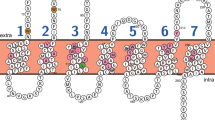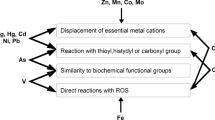Abstract
Recently M. E. Rumpho and coworkers (USA) established that the marine slug Elysia chlorotica, a gastropod mollusk that feeds on the eukaryotic filamentous yellow-green alga Vaucheria litorea, recruits chloroplasts from the alga and transports them from the digestive apparatus into a special organ of the slug that resembles a green leaf and is an approximately 100-fold increased parapodium—an outgrowth of the slug’s body. The chloroplasts survive inside the slug for up to 10 months and perform active photosynthesis accompanied by assimilation of CO2. Under conditions of starvation, this photosynthesis becomes for the animal the only source of energy and fixed carbon. For functioning, chloroplasts have to constantly import some short-lived proteins that are encoded in the nucleus of the photosynthesizing organism. Therefore, the authors supposed that a transfer of the corresponding genes must have occurred between the algal and mollusk nuclei. This hypothesis was experimentally confirmed for two genes encoding proteins of the photosynthesizing apparatus. The questions arise of what mechanism was responsible for the transfer of these genes and how the slug created its photosynthesizing organ resembling the leaf of a higher plant rather than the primitive filamentous algal structure which was the source of the acquired chloroplasts and the photosynthesis genes.
Similar content being viewed by others
References
Rumpho, M. E., Summer, E. J., and Manhart, J. R. (2000) Plant Physiol., 123, 29–38.
Rumpho, M. E., Summer, E. J., Green, B. J., Fox, T. C., and Manhart, J. R. (2001) Zoology (Jena), 104, 303–312.
Rumpho, M. E., Worful, J. M., Lee, J., Kannan, K., Tyler, M. S., Bhattacharya, D., Moustafa, A., and Manhart, J. R. (2008) Proc. Natl. Acad. Sci. USA, 105, 17867–17871.
Rumpho, M. E., Pochareddy, S., Worful, J. M., Summer, E. J., Bhattacharya, D., Pelletreau, K. N., Tyler, M. S., Lee, J., Manhart, J. R., and Soule, K. M. (2009) Mol. Plant, 2, 1384–1396.
Walker, D. A., Baldry, C. W., and Cockburn, W. (1968) Plant Physiol., 43, 1419–1422.
Green, B. J., Li, W. Y., Manhart, J. R., Fox, T. C., Summer, E. J., Kennedy, R. A., Pierce, S. K., and Rumpho, M. E. (2000) Plant Physiol., 124, 331–342.
Mattoo, A. K., Hoffman-Falk, H., Marder, J. B., and Edelman, M. (1984) Proc. Natl. Acad. Sci. USA, 81, 1380–1384.
Graves, D. A., Gibson, M. A., and Bleakney, J. S. (1979) Veliger, 21, 415–422.
West, H. H. (1979) Chloroplast Symbiosis and Development of the Ascoglossum Opisthobranch Elysia chlorotica: PhD Thesis, Northwestern University.
Hinde, R., and Smith, D. C. (1974) Biol. J. Linn. Soc., 6, 349–356.
Raven, J. A. (1997) Luminol. Oceanogr., 42, 198–205.
Gustafson, D. E., Jr., Stoecker, D. K., Johnson, M. D., van Heukelem, W. F., and Sneider, K. (2000) Nature, 405, 1049–1052.
Author information
Authors and Affiliations
Corresponding author
Additional information
Original Russian Text © V. P. Skulachev, 2010, published in Biokhimiya, 2010, Vol. 75, No. 12, pp. 1729–1731.
Electronic supplementary material
Rights and permissions
About this article
Cite this article
Skulachev, V.P. Discovery of a photosynthesizing animal that can survive for months in a light-dependent manner. Biochemistry Moscow 75, 1498–1499 (2010). https://doi.org/10.1134/S0006297910120114
Received:
Published:
Issue Date:
DOI: https://doi.org/10.1134/S0006297910120114




